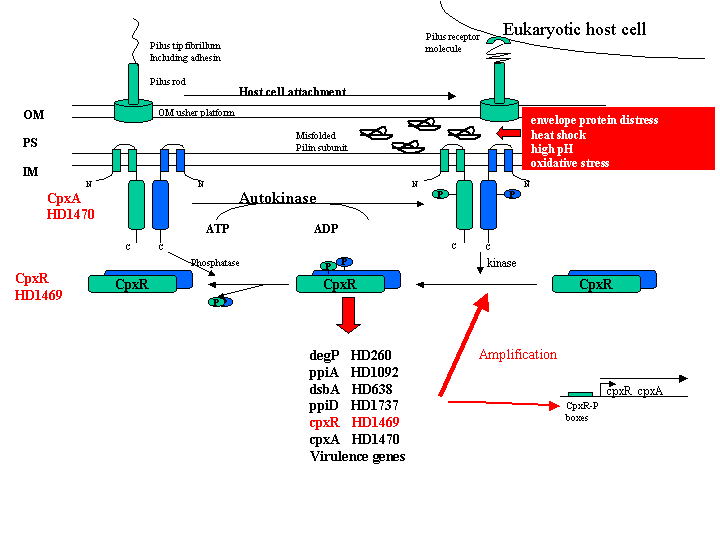

CpxA and CpxR are shown as dimers. OM, outer membrane; PS, periplasmic space; IM, inner membrane.
The Cpx pathway monitors and assists in pilus assembly. In the absence of appropriate receptor molecules, the Cpx pathway is maintained mainly in an off or kinase-/phosphatase+ state. Interaction of CpxA with the periplasmic signaling molecule CpxP helps maintain this state. Attachment to an appropriate eukaryotic cell receptor impedes pilus growth on the cell surface, resulting in an accumulation of misfolded subunits at the periplasmic face of the IM. In response to envelope stress, misfolded proteins may bind to the sensing domain of CpxA, resulting in an elevation of the kinase activity relative to the phosphatase activity and accumulation of CpxR–P in the cytoplasm. CpxR–P leads to rapid amplification of the pathway through autoactivation of the cpxRA operon, and also activates expression of envelope folding and degrading factors, including ppiA and ppiD (encoding periplasmic peptidyl-prolyl cis-trans isomerases), dsbA (encoding a periplasmic disulfide oxidoreductase), degP (encoding a periplasmic protease), which are involved in pilus biogenesis, virulence genes, and other unidentified downstream targets.
*This figure was modified from (25).